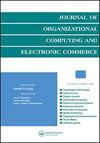企业如何利用社交媒体帖子获取网络社交资本?基于微信用户数字足迹的测量视角
IF 1.9
4区 管理学
Q3 COMPUTER SCIENCE, INFORMATION SYSTEMS
Journal of Organizational Computing and Electronic Commerce
Pub Date : 2022-10-02
DOI:10.1080/10919392.2022.2162288
引用次数: 0
摘要
摘要社交网站的普及为企业与客户建立在线社交资本提供了创新机会。然而,人们对如何在社交媒体背景下衡量和促进公司的在线社交资本知之甚少。本研究基于企业在社交媒体上发布信息的具体特征,考察了企业网络社会资本的前因。本研究借鉴社会资本理论,首次提出了一个具有用户数字足迹的网络社会资本衡量体系。通过将微信帖子的特征划分为外层特征和内层特征,对968条微信帖子进行的实证研究表明,外层特征,包括标题的生动性和帖子的序列性,对获取网络桥接社会资本具有积极影响;帖子中包含的内容类型、内容生动性和客户评价等特征显著促进了绑定社会资本的获取。此外,这项研究为企业高管通过社交媒体帖子获得在线社交资本提供了有效的信息策略指南。本文章由计算机程序翻译,如有差异,请以英文原文为准。
HOW DOES AN ENTERPRISE USE SOCIAL MEDIA POSTS TO ACQUIRE ONLINE SOCIAL CAPITAL? A MEASUREMENT PERSPECTIVE BASED ON WECHAT USERS’ DIGITAL FOOTPRINTS
ABSTRACT The popularity of social network sites provides enterprises with innovative opportunities to build online social capital with customers. However, little is known about how to measure and facilitate the online social capital of a company in the context of social media. This study examined the antecedents of enterprises’ online social capital based on the specific characteristics of their messages posted on social media. Drawing upon the social capital theory, this study first proposed a measurement system of online social capital with users’ digital footprints. By assigning WeChat posts’ characteristics into outer and inner layer features, the empirical findings with 968 WeChat posts show the features of the outer layer, including title vividness and the sequences of posts, have positive effects on acquiring online bridging social capital; other features that consist of content type, content vividness, and customers’ testimonials embedded in a post significantly promote the acquisition of bonding social capital. Further, this study provides guidelines for effective messaging strategies that business executives can use to gain online social capital via social media posts.
求助全文
通过发布文献求助,成功后即可免费获取论文全文。
去求助
来源期刊

Journal of Organizational Computing and Electronic Commerce
工程技术-计算机:跨学科应用
CiteScore
5.80
自引率
17.20%
发文量
7
审稿时长
>12 weeks
期刊介绍:
The aim of the Journal of Organizational Computing and Electronic Commerce (JOCEC) is to publish quality, fresh, and innovative work that will make a difference for future research and practice rather than focusing on well-established research areas.
JOCEC publishes original research that explores the relationships between computer/communication technology and the design, operations, and performance of organizations. This includes implications of the technologies for organizational structure and dynamics, technological advances to keep pace with changes of organizations and their environments, emerging technological possibilities for improving organizational performance, and the many facets of electronic business.
Theoretical, experimental, survey, and design science research are all welcome and might look at:
• E-commerce
• Collaborative commerce
• Interorganizational systems
• Enterprise systems
• Supply chain technologies
• Computer-supported cooperative work
• Computer-aided coordination
• Economics of organizational computing
• Technologies for organizational learning
• Behavioral aspects of organizational computing.
 求助内容:
求助内容: 应助结果提醒方式:
应助结果提醒方式:


